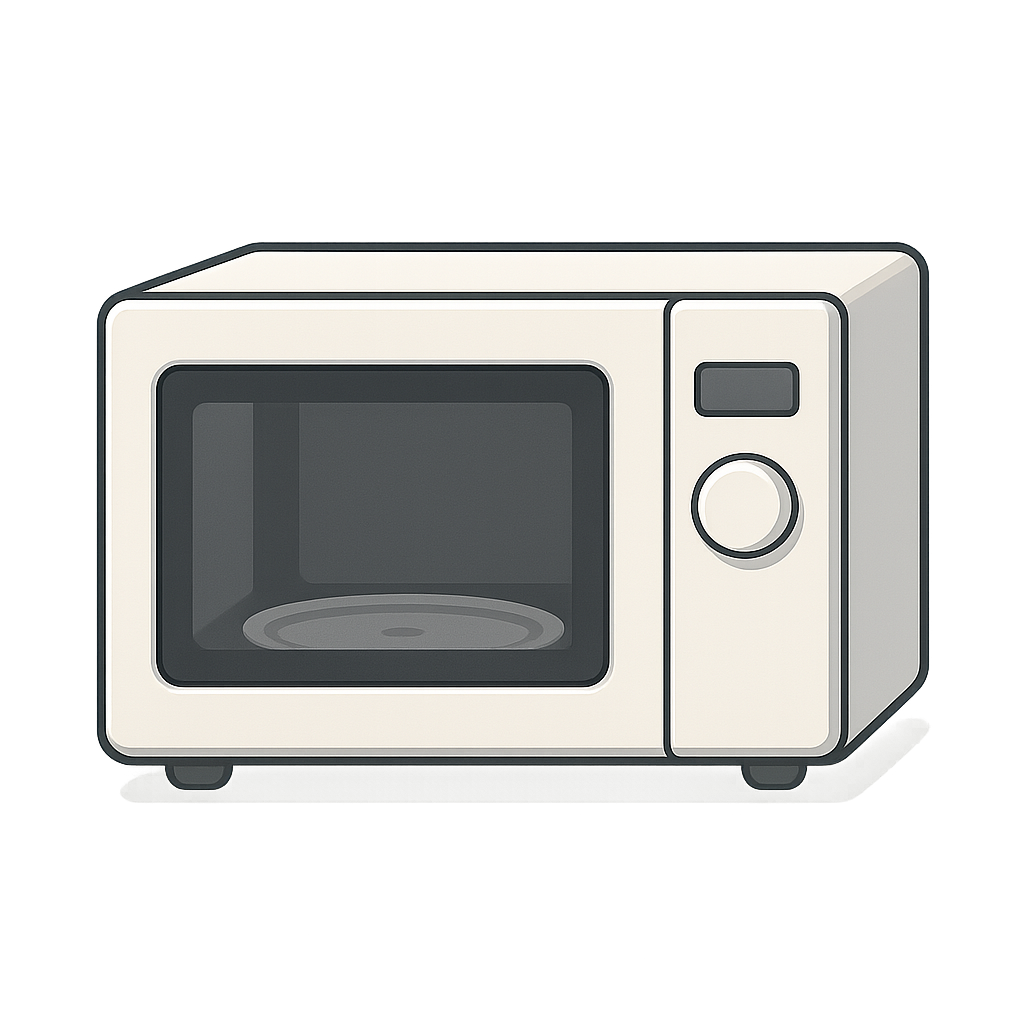The Amazing Tale of the Microwave Oven
Hello there. My name is Percy Spencer, and if there’s one thing you should know about me, it’s that I’ve always loved to tinker. Taking things apart, figuring out how they hum and whir, and putting them back together has been my favorite puzzle since I was a boy. Back in 1945, I was working at a company called Raytheon, surrounded by all sorts of fascinating gadgets. My job was to help build something called a magnetron, a special tube that created invisible waves for radar systems. These systems were very important; they could spot airplanes in the sky from miles away. The lab was always buzzing with energy, both from the inventors and from the machines themselves. One afternoon, while I was standing near a magnetron that was powered on, I noticed something peculiar. I reached into my pocket for a snack I’d been saving—a delicious chocolate peanut bar. But when I pulled it out, it wasn't a bar at all. It was a gooey, melted mess. Now, I could have just been annoyed about my ruined treat, but my inventor's brain kicked in. The room wasn’t hot, so what could have melted my chocolate so quickly? My eyes drifted to the humming magnetron, and a thrilling question popped into my head: could the invisible radar waves have cooked my candy?
That one gooey chocolate bar sparked an incredible idea. I was so excited I could barely sleep that night. The very next day, I marched back into the lab, but this time, I brought a bag of popcorn kernels with me. I wanted to test my theory. My colleagues gathered around, looking puzzled as I held the bag of kernels near the magnetron tube. At first, nothing happened. But then, a single kernel wiggled. Then another. Suddenly, POP. POP. POP-POP-POP. The kernels burst into fluffy white popcorn, flying all over the laboratory. We were all laughing and ducking as we were showered with our experiment. It was a wonderful, buttery mess, and it proved I was onto something big. My mind was racing with possibilities. What else could these amazing waves do? For my next experiment, I chose an egg. I knew the waves heated things from the inside out, so I was curious what would happen. I placed the egg in a tea kettle and aimed the magnetron’s waves toward it. One of my co-workers, a fellow who was just as curious as I was, leaned in for a closer look. The egg began to tremble and shake inside the kettle. Before I could warn him to step back, the egg exploded. SPLAT. My friend was suddenly wearing a face full of hot, scrambled egg. While we had a good laugh after cleaning him up, it taught me a very important lesson: this new cooking method was incredibly powerful and fast.
After my experiments with popcorn and the exploding egg, I knew I had discovered something that could change the way people cooked forever. The challenge was figuring out how to control this amazing power. We couldn't just have people standing next to a giant magnetron in their kitchen. So, my team and I designed a sturdy metal box that could trap the microwaves inside, focusing all their energy on the food. We called our invention the “Radarange.” The very first microwave oven was a giant. Can you imagine a microwave as tall as a refrigerator and weighing over 750 pounds? It was also incredibly expensive, costing thousands of dollars. At first, only big restaurants and hospitals could afford them. But an idea as good as this one was bound to catch on. Over many years, other clever engineers and inventors worked to make the Radarange smaller, safer, and much cheaper. They designed doors that stopped the waves the second you opened them and created the turntables that help your food cook evenly. It all started because I was curious about a melted chocolate bar. It just goes to show you that sometimes, a simple question can lead to an invention that helps millions of people every single day, proving that curiosity is one of the most powerful tools an inventor can have.
Reading Comprehension Questions
Click to see answer
